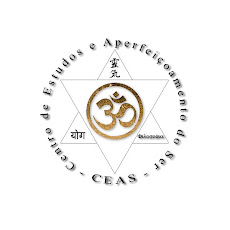Friday, August 27, 2010
INTEGRAL YOGA - PURNA YOGA
In The Synthesis of Yoga, and in his correspondence with his disciples collected under the title Letters on Yoga, Sri Aurobindo laid out the psychological principles, practices and the nature of the Integral Yoga or Purna Yoga. The aim of Integral yoga is to enable the individual who undertakes it the attainment of a conscious identity with the Divine, the true Self, and to transform the mind, life, and body so they would become fit instruments for a divine life on earth. As the title of that work indicates, his integral yoga is a yoga of synthesis, intended to harmonize the paths of karma, jnana, and bhakti yoga as described in the Bhagavad Gita. It can also be considered a synthesis between Vedanta and Tantra, and even between Eastern and Western approaches to spirituality.
Integral Yoga or Purna Yoga, Sanskrit for full or complete yoga, sometimes also called supramental yoga refers to the process of the union of all the parts of one's being with the Divine, and the transmutation of all of their jarring elements into a harmonious state of higher divine consciousness and existence.
Sri Aurobindo defined integral yoga in the early 1900s as "a path of integral seeking of the Divine by which all that we are is in the end liberated out of the Ignorance and its undivine formations into a truth beyond the Mind, a truth not only of highest spiritual status but of a dynamic spiritual self-manifestation in the universe."
Yoga Intégral
Dans The Synthesis of Yoga, et dans sa correspondance avec ses disciples recueillis en livre sur le titre Letters on Yoga, Sri Aurobindo a énoncé les principes psychologiques, les pratiques et la nature du yoga intégral ou Purna Yoga. Le but du yoga intégral est de permettre à l'individu qui s'engage elle la réalisation d'une identité consciente avec le Divin, le vrai Soi, et de transformer l'esprit, la vie, et le corps pour qu'ils puissent devenir des instruments propres à une vie divine sur terre. Comme le titre de cet ouvrage l'indique, son yoga intégral est un yoga de synthèse, destiné à harmoniser les chemins du karma, jnana, bhakti yoga et tel que décrit dans la Bhagavad Gita. Il peut également être considéré comme une synthèse entre Vedanta et du Tantra, et même entre l'Est et l'Ouest des approches à la spiritualité.
Integral Yoga ou Purna Yoga, le sanskrit pour le yoga intégral ou complet, parfois aussi appelé le Yoga Supramental se réfère au processus de l'union de toutes les parties de son être avec le Divin, et la transmutation de l'ensemble de leurs éléments discordants dans un état harmonieux de la conscience divine supérieure et de l'existence.
Sri Aurobindo défini yoga intégral dans les années 1900 comme "une voie de recherche intégrante de la divine par laquelle tout ce que nous sommes est en fin de compte libéré de l'ignorance et de ses formations Undivine en une vérité au-delà de l'esprit, une vérité non seulement de état spirituel le plus élevé, mais d'une dynamique spirituelle manifestation de soi dans l'univers."
Yoga Integral
Na livro The Synthesis of Yoga, e em sua correspondência com seus discípulos recolhidos sob o título Letters on Yoga, Sri Aurobindo estabeleceu os princípios psicológicos, práticas e a natureza do Yoga Integral ou Purna Yoga. O objetivo do Yoga Integral é permitir que o indivíduo se comprometa com a realização de uma identidade consciente com o Divino, o Ser Verdadeiro, e a transformar a sua mente, vida e corpo para que se tornem instrumentos próprios para uma vida divina na terra. Como o título desta obra indica, seu yoga é um yoga de síntese, e destina-se a harmonizar os caminhos do Karma, Jnana e Bhakti Yoga, como descrito no Bhagavad Gita. Ele também pode ser considerado uma síntese entre Vedanta e Tantra, e até mesmo entre as abordagens oriental e ocidental com a espiritualidade.
Yoga Integral ou Purna Yoga, do sânscrito yoga integral ou completo, as vezes também chamado de Yoga Supramental se refere ao processo de união de todas as partes do nosso Ser com o Divino, e a transmutação de todos os seus elementos dissonantes em um estado harmonioso de maior consciência divina e da existência.
Sri Aurobindo definiu o Yoga Integral no início de 1900 como "um caminho de busca integrante do Divino através do qual tudo o que somos é liberado com o final da ignorância e suas formações não divinas em uma verdade além da mente, uma verdade não só do estado espiritual mais elevado, mas de uma dinâmica espiritual, auto-manifestada no universo."

